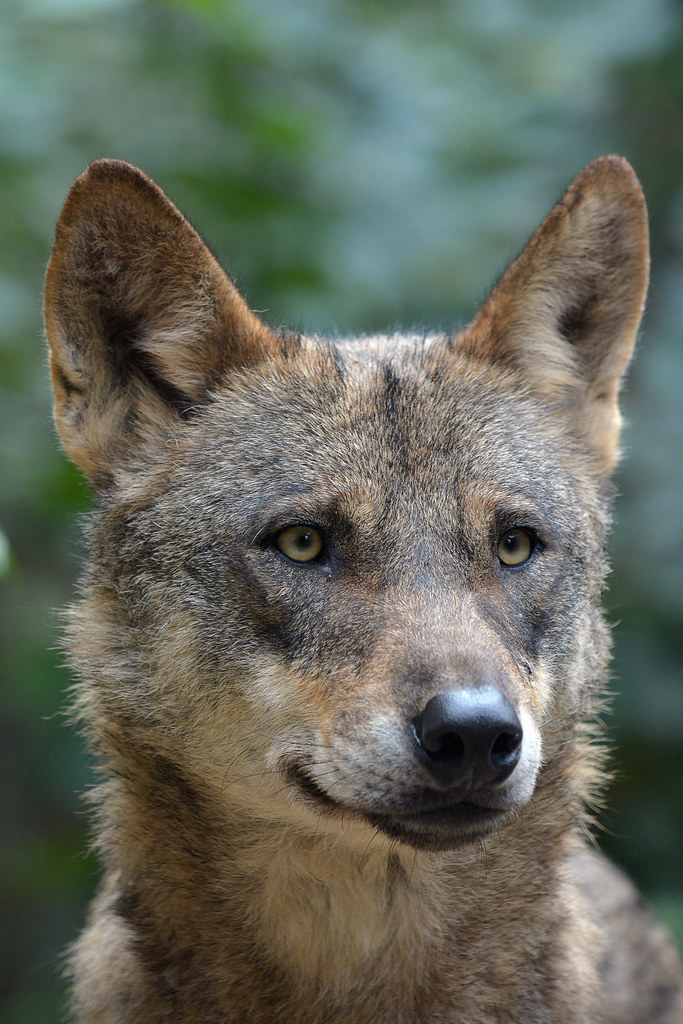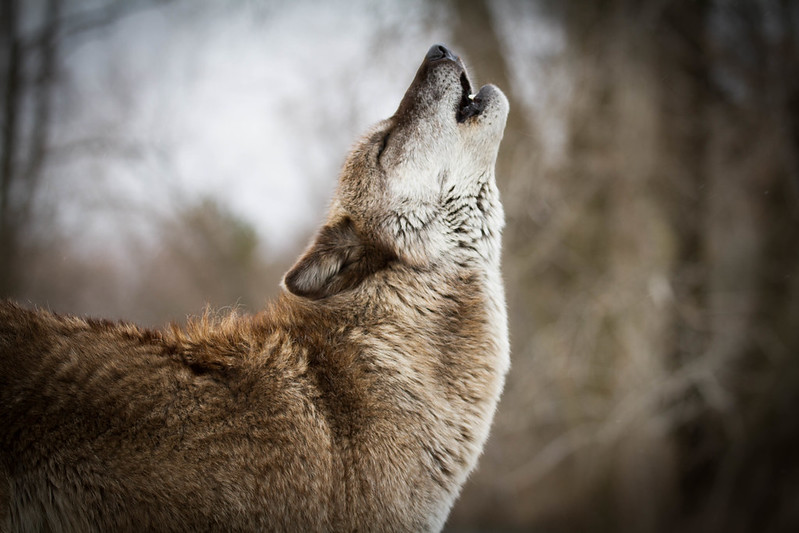Lobo Week, March 23-30, 2015, marks the 17th anniversary of
the Mexican gray wolf's return to the wild. However, this wolf
subspecies' tortuous recovery journey actually began over 40 years ago,
when the 1973 Endangered Species Act inspired Americans to build an ark.
One of the first creatures we welcomed onto our ark was the gray wolf.
But arks and best-laid plans sometimes don't work as intended.
In
1977, the U.S. Fish and Wildlife Service (USFWS) contracted Roy McBride
to capture wild Mexican wolves in Mexico to begin a breeding program
for this nearly extinct subspecies of gray wolf. Ironically, McBride,
who for years had lethally trapped wolves, now applied his considerable
skills to wolf conservation. In three years he caught five animals. Just
in the nick of time, too, because by the early 1980s the Mexican gray
wolf had gone completely extinct in the wild.
 Mexican Gray Wolf, California Wolf Center.
Photo by Cristina Eisenberg
Mexican Gray Wolf, California Wolf Center.
Photo by Cristina Eisenberg
In
1990, USFWS hired David Parsons to lead the Mexican Gray Wolf Recovery
Program. Parsons augmented McBride's five wolves with two certified pure
Mexican gray wolves from captive populations in New Mexico and Mexico.
The USFWS then designated the Blue Range Wolf Recovery Area, which
straddled Arizona and New Mexico, where these wolves would be released.
It totaled 7,000 square miles of national forest lands and contained a
primary recovery area nested within a broader secondary recovery area.
 Blue Range Wolf Recovery Area. Photo by Cristina Eisenberg
Blue Range Wolf Recovery Area. Photo by Cristina Eisenberg
Due
to politics and resistance, it would take a lawsuit by the Center for
Biological Diversity to spur the 1998 USFWS release of eleven
captive-bred Mexican wolves into the Blue Range. Since then, an influx
of captive-bred wolves has bolstered this population. Today fifty
licensed centers breed wolves for this federal program. Top facilities
include the
Wolf Conservation Center in New York, the
California Wolf Center, and the Turner Endangered Species Fund's
Ladder Ranch in New Mexico.
 Mexican Gray Wolf, California Wolf Center. Photo by Cristina Eisenberg.
Mexican Gray Wolf, California Wolf Center. Photo by Cristina Eisenberg.
By 2014, only
83 Mexican gray wolves survived in the wild. This
population struggled due to poaching and legal killing by the federal
government for livestock depredation. Conservation biologist Paul Paquet
and others concluded that it faced a very uncertain future without key
management reforms.
To learn more about lobo recovery, I spent a crisp autumn day afield with educator and filmmaker
Elke Duerr
in the New Mexican portion of the Blue Range. To get there we travelled
south through El Malpais National Monument into Catron County. This
economically strapped county provides a home to 3,500 people, 12,000
elk, lots of cattle, a smattering of wolves and some of the most
virulent wolf hatred in the West. The Gila National Forest makes up a
large chunk of the county. Wolves gravitate to the beautiful mixed open
meadows and woodlands here, and so did we -- to track these elusive
carnivores.
 Gila National Forest. Photo by Cristina Eisenberg
Gila National Forest. Photo by Cristina Eisenberg
We
entered the forest on foot, following a narrow stream. Cattle sign far
outnumbered other animal sign. The cattle had trampled the riparian
vegetation, causing the barren stream banks to erode. We spotted coyote,
elk, and deer tracks. In a clearing next to the stream, we found a
wolf-killed elk carcass. Its femurs had been bitten in two, the marrow
sucked out -- evidence of wolves, because in this area only they have
carnassial teeth big enough to bite an elk femur in half. This carcass
gave us hope.
Back on the highway, we continued south to Apache
Creek where we stopped for gas and some big lessons about wolf recovery.
Across the street from the gas station stood a billboard emblazoned
with a lurid photograph of a dead calf, and another of a dead horse.
Both had had their bellies torn open. The billboard caption read,
"Beware, Wolves Nearby! Keep Kids and Pets Close!" This community even
had installed cages for kids, to keep them safe from wolves as they
waited for the school bus.

Catron County Billboard. Photo by Cristina Eisenberg
I
found this entrenched wolf hatred irrational and sobering. Irrational
because wolf depredation accounted for a minor amount of total livestock
losses, and no wild wolf had ever killed a human in the U.S. Sobering
because these fears were rooted in something very difficult to change:
people's worldviews.
In this impoverished county, people despise
the federal government. They've turned the wolf into a scapegoat for
what they fear most: government control over what they can and can't do
on their land. They fear being forced off public land, where some
families have held grazing leases for several generations.
The
Apache Creek billboard depicted the powerful clash between the old and
new West. Unlike the old West, in which the only good varmint was a dead
one, a growing number of living wolves populates the new West. People
in places like Catron County are desperately trying to hold onto the
mythical West and all its lawlessness, unfettered human freedom, and
shoot-shovel-and-shut-up ways of dealing with wolves.
Defenders of
Wildlife has made commendable inroads in reducing conflicts between
wolves and livestock here. Depredation prevention measures include range
riders, fladry, alternative pastures, and community calving. However,
old ways die hard. Some ranchers have accepted this help -- but others
have refused.
When I asked Duerr what would increase social
acceptance of wolves, she said, "Educating the next generation is our
best hope." To that end, she and those involved in Mexican wolf
conservation, particularly federally licensed captive-breeding centers,
have developed outstanding education programs.
Other recovery
tools include the 2015 USFWS Mexican Wolf Experimental Population Rule.
It increases ten-fold the area where wolves can be released and raises
the recovery goal to 300-325 individuals. Yet experts call this
insufficient. In the meantime, el lobo continues to face an uncertain
future.
_____
Learn more about the importance of wildlife corridors by reading The Carnivore Way: Coexisting with and Conserving North America's Predators, by Dr. Cristina Eisenberg. Learn more about large carnivore conservation by joining Cristina afield on her Earthwatch expedition, Tracking Fire and Wolves through the Canadian Rockies.
source






